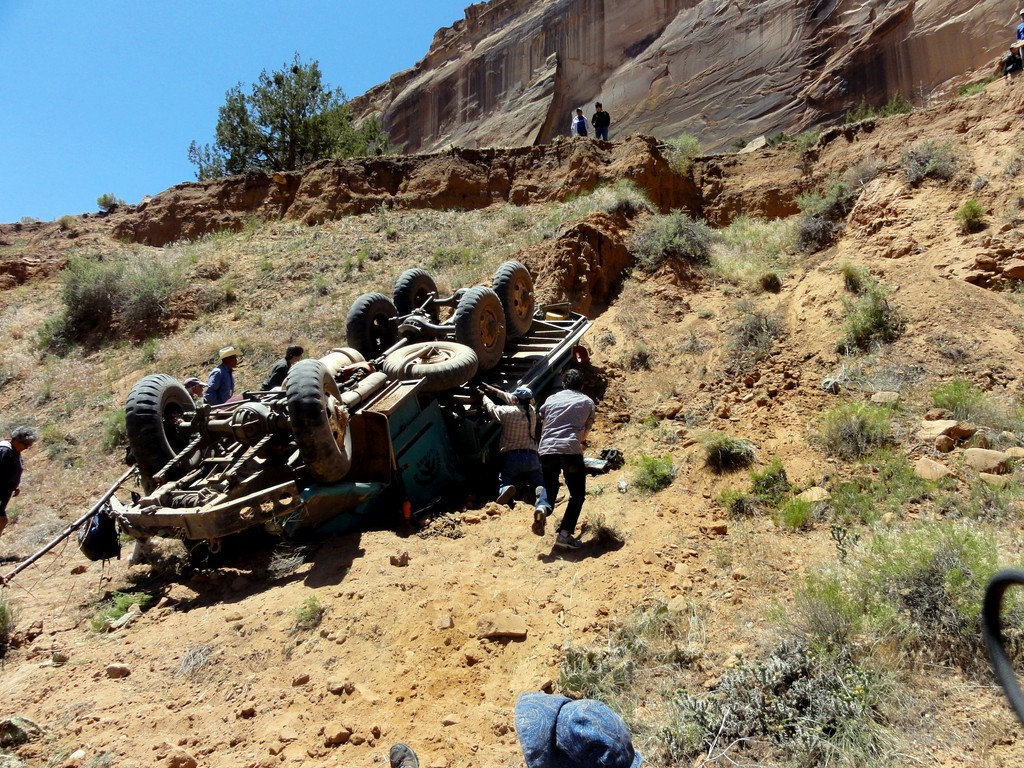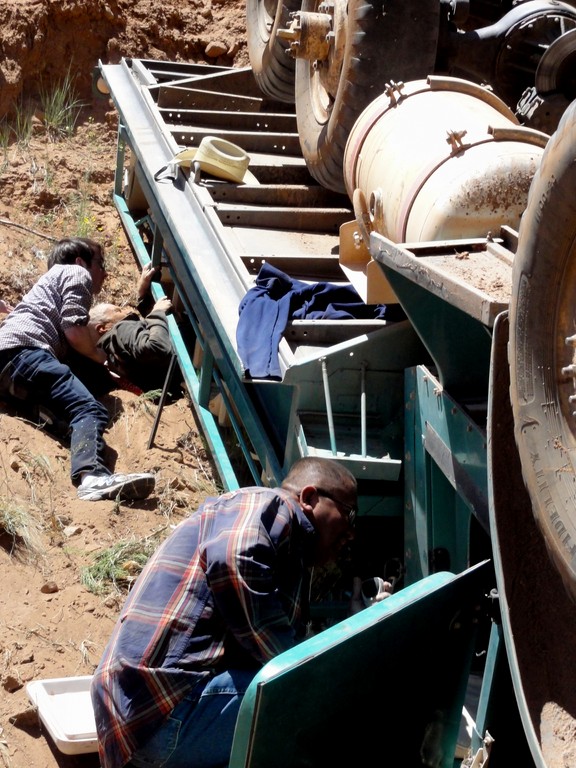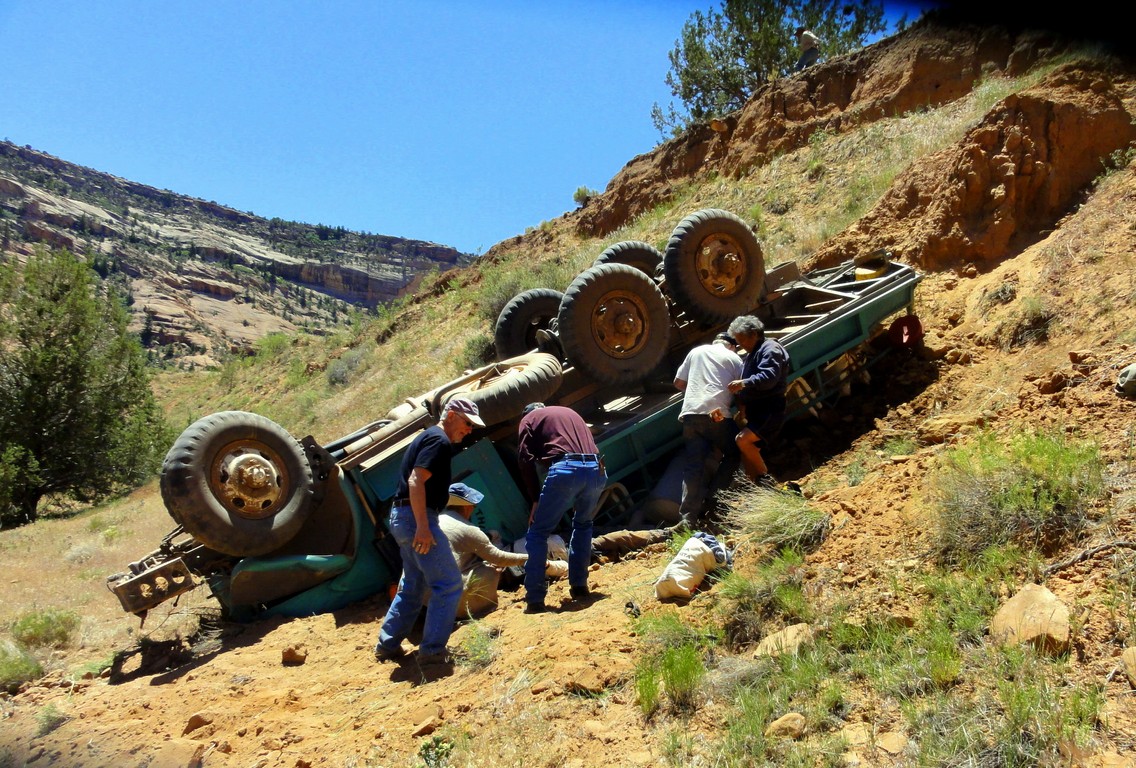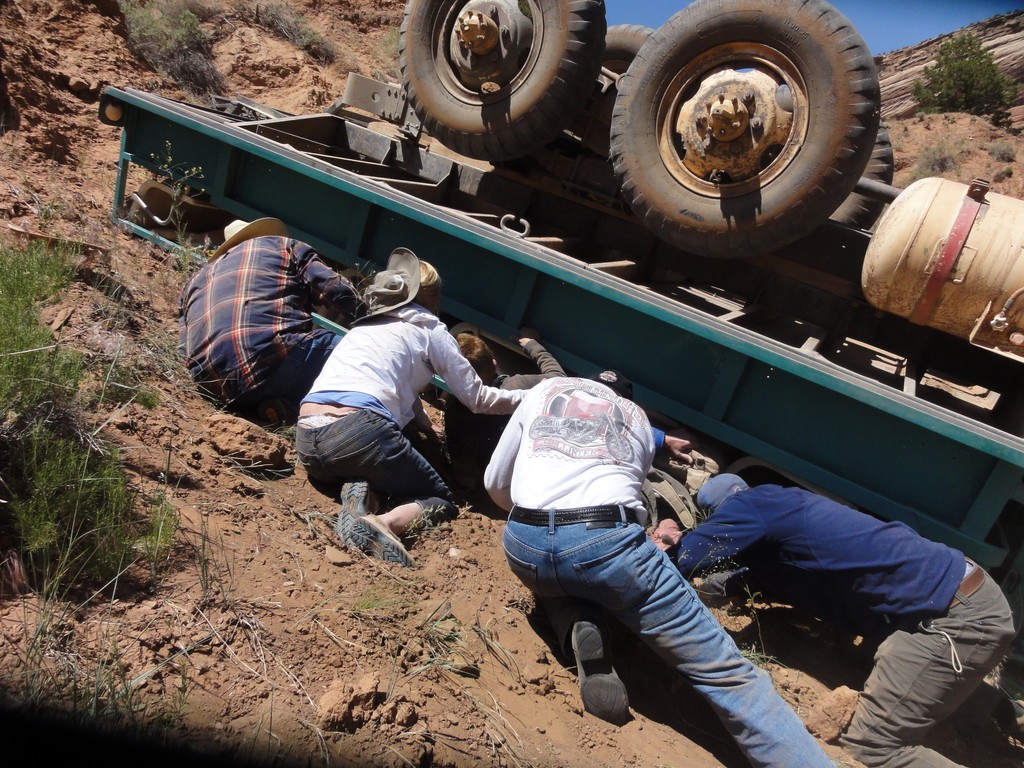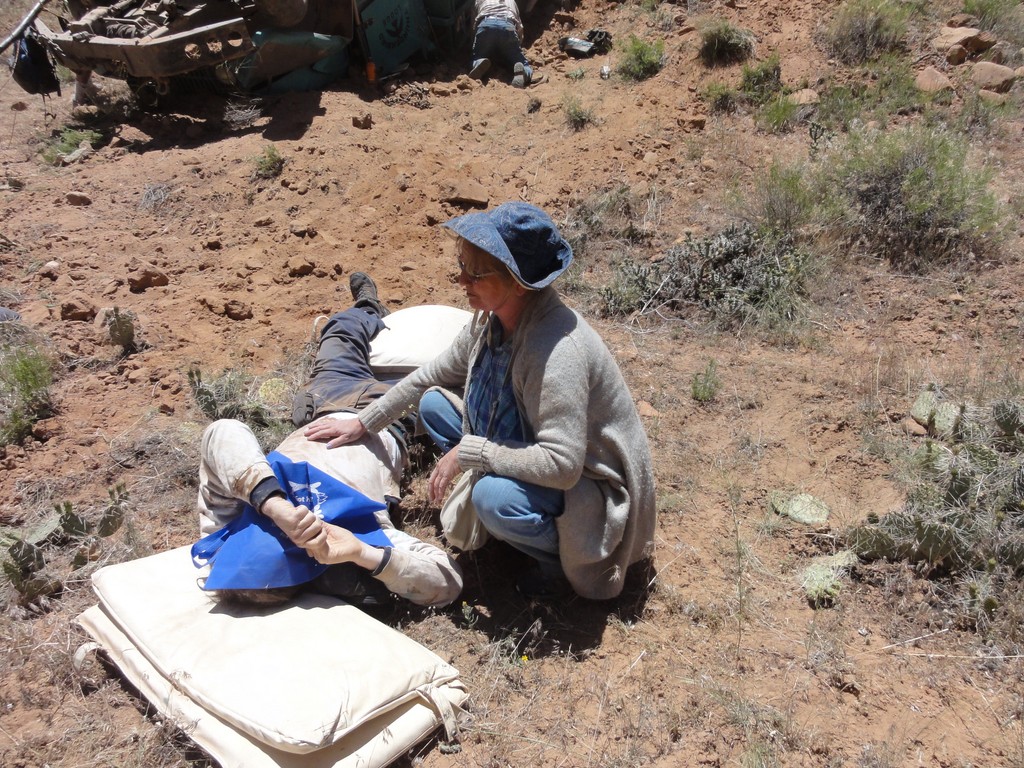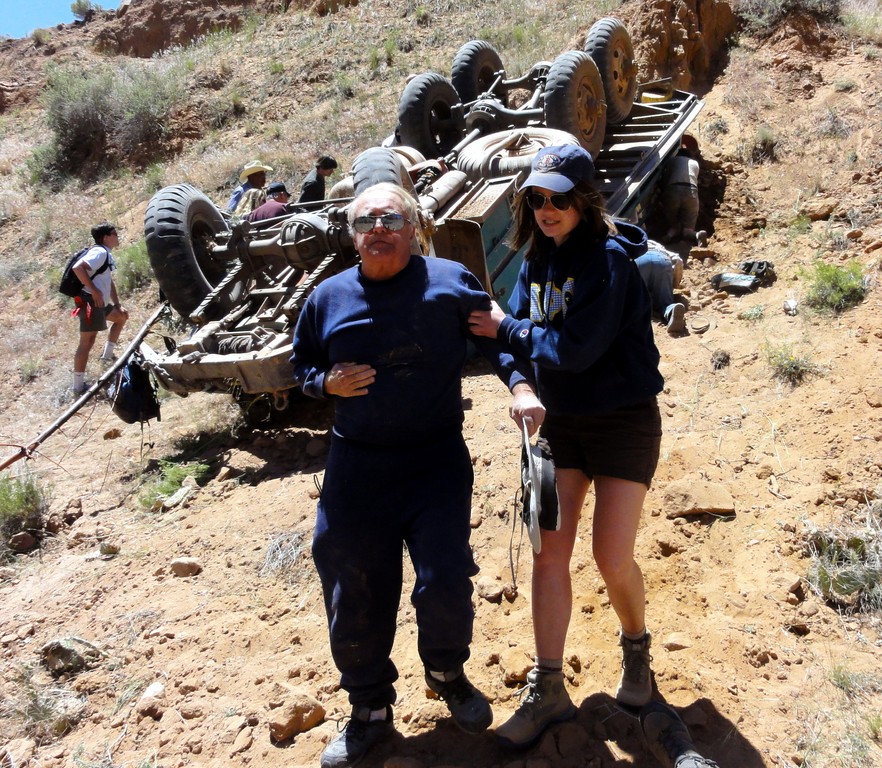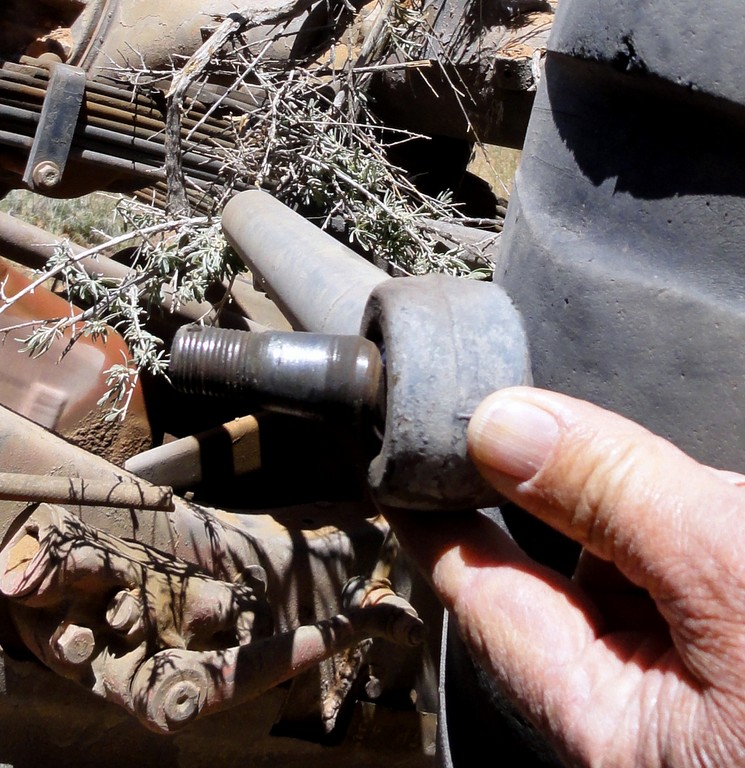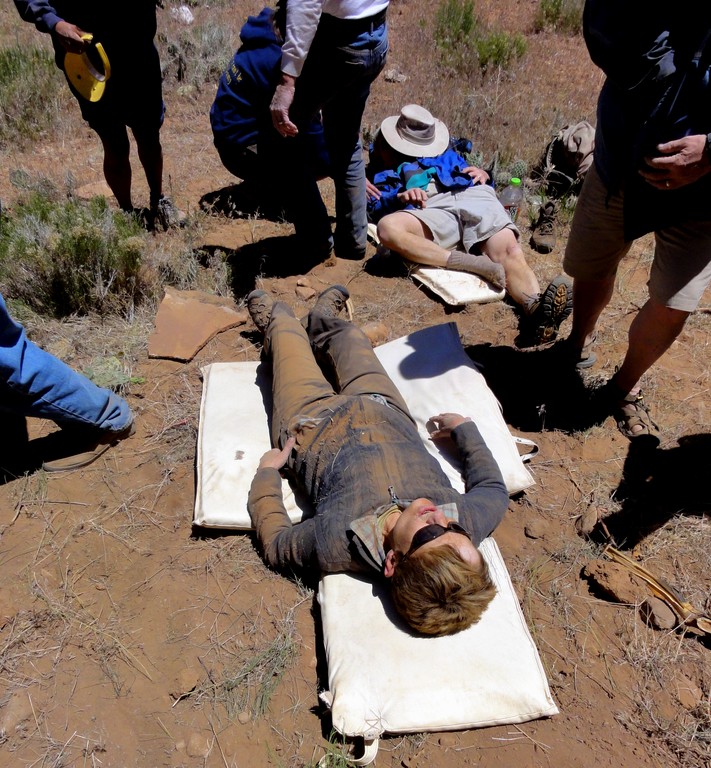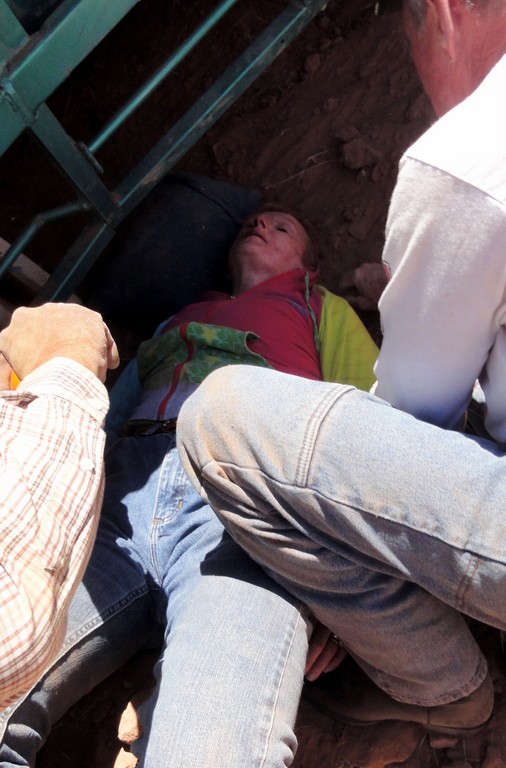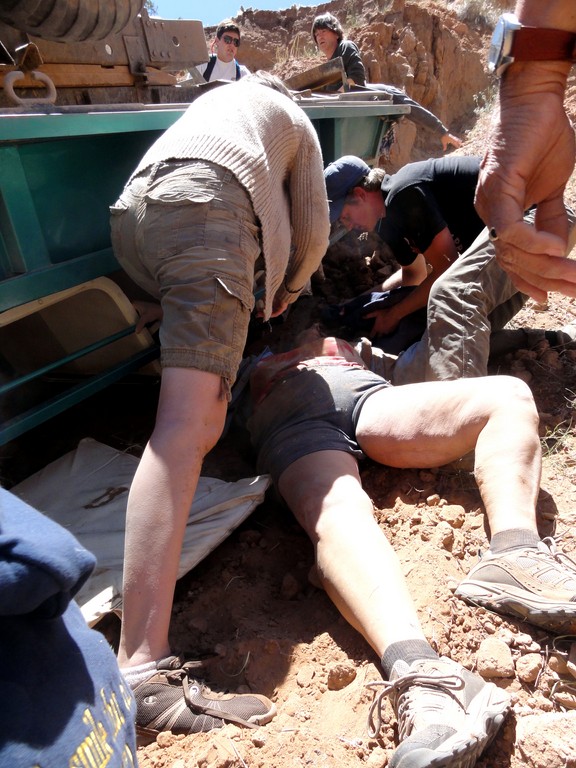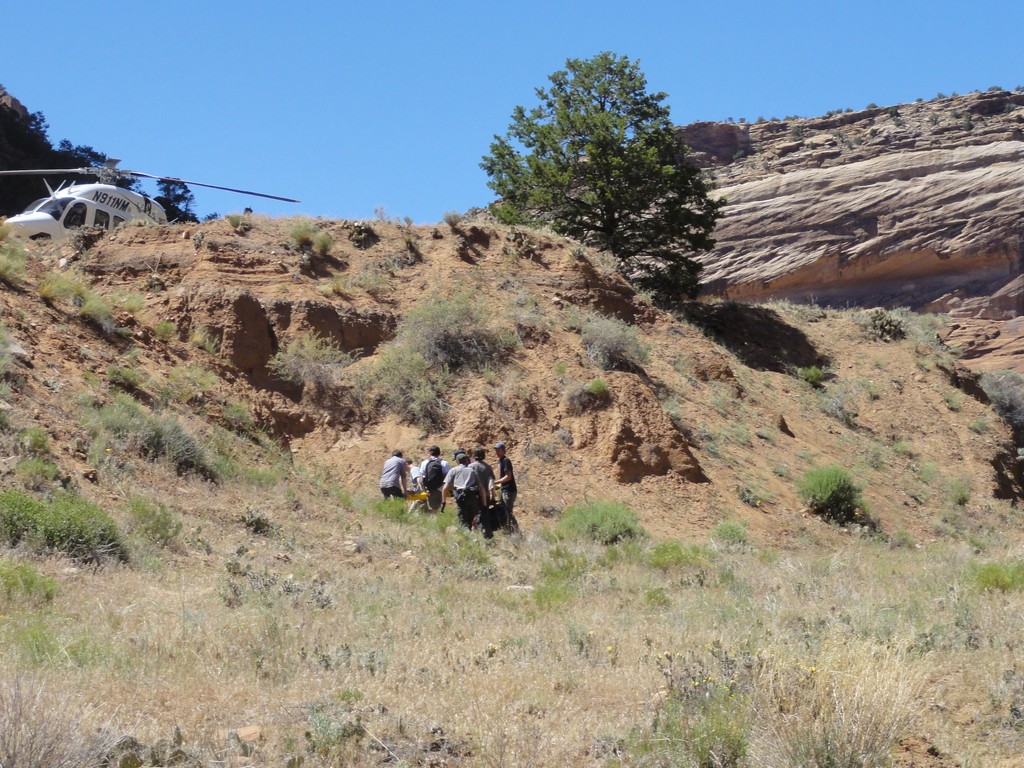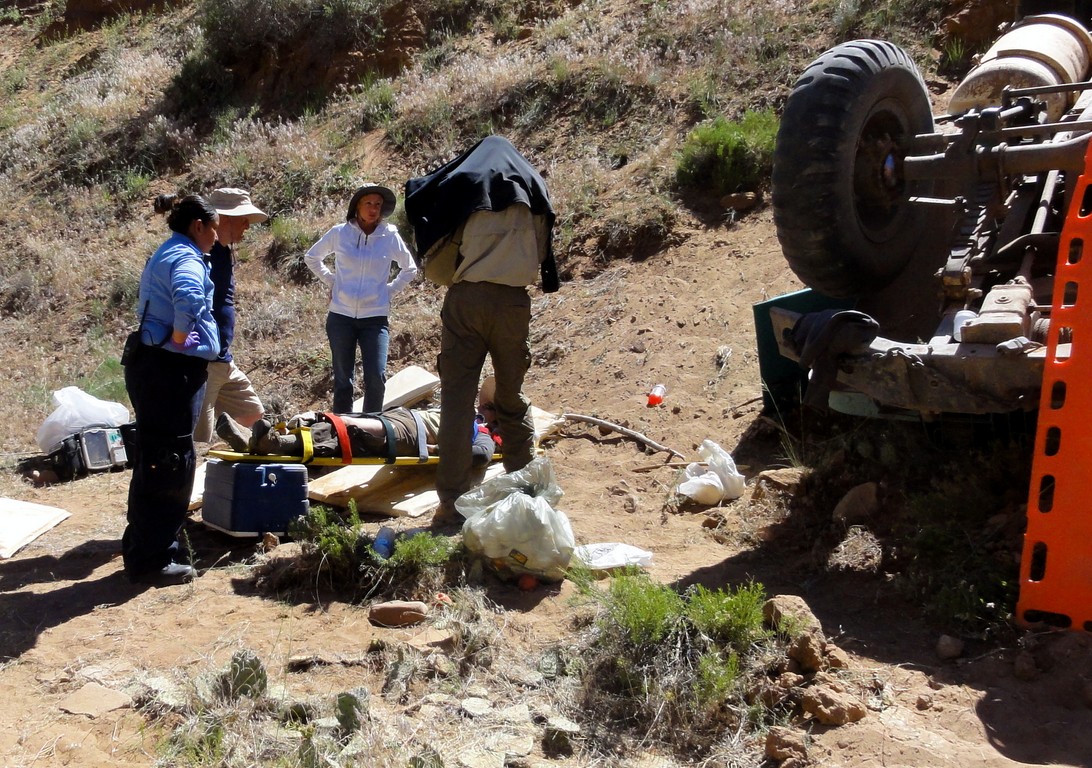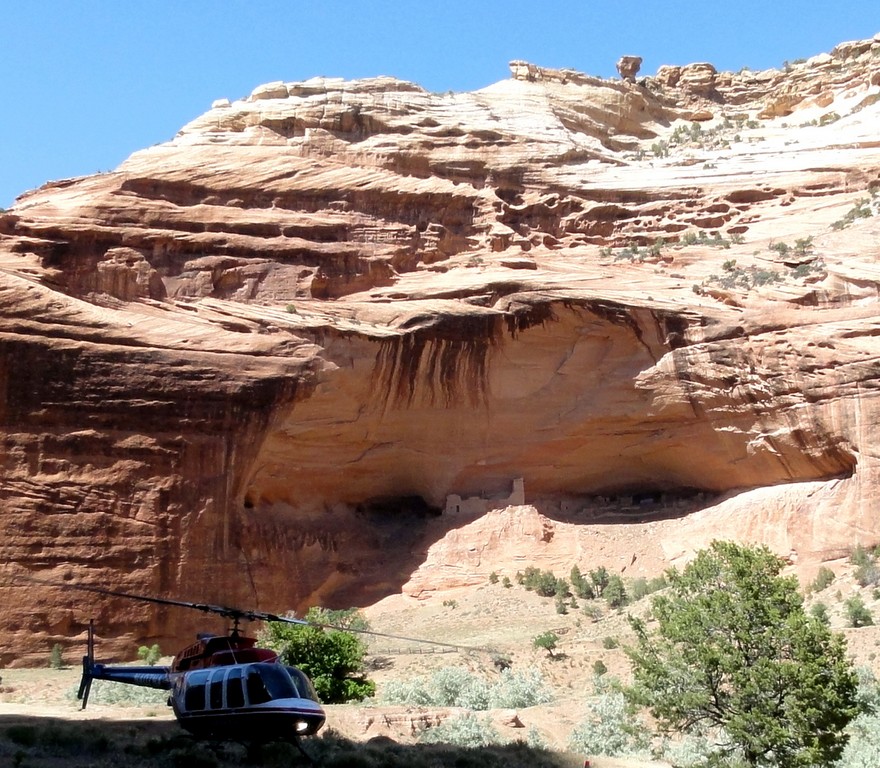
Once the officials took over the canyon accident, and the severely injured were on their way to help, the rest of us gave a collective sigh of relief, and finally felt like we could sit down, except,there was no place to sit without encountering cactus thorns.

The last person to be removed from the ravine was Richard Crowe. The crew bowed their heads in prayer before placing him in the helicopter.

I slowly made my way to the road and found it jammed with vehicles. Everything seemed chaotic and I wondered how I was going to get out of the canyon?

Jim had been helped to the top and lay on a rock waiting for the helicopter to return and move he and Bill Repshur to an ambulance waiting on the overlook. From there, the ambulance took them to the Chinle Medical Center.
Jean, Chris, myself and Anita, the walking wounded, were asked if we wanted to ride out with a volunteer family from the canyon. The Bia family had come into the canyon that day to water their squash and corn plants with their children. When they saw many emergency vehicles driving by, and heard the helicopters, they knew something terrible had happened and drove over to offer help. The kids gave up their back seat in the truck and stayed at the site with friends, (I assume), so Jean, Chris and I took their place in the back of the pick-up. We met Albert and Cecilia Bia, and Virginia (Bia) Lee, a brother and two sisters. This wonderful family turned to us after introductions and asked if we would like to pray with them. We all clasped hands on the back of their bench seat and the family prayed for us, and for all of those in trouble, in Navajo. A very touching gesture I will never forget.
Albert drove as quickly as he could, navigating the rough, bumpy road. He told us the canyon had been closed to traffic so we would meet very little traffic on the way out on the narrow roads.
As we bumped along, I realized something was wrong with my back. Sitting against the back seat, made my back burn. I was able to hook my toes under the front seat and sit upright enough so my back wouldn’t touch. It was wonderfully distracting to have Albert, Cecilia and Virginia tell us about their lives.
Families from their clan, who farm in the canyon, where there is no electricity or running water and sewer, live “on top”. It would be more difficult to get their children to school each day, and take care of daily life, than to haul water down into the canyon to water their plants. He had driven in with the children. He pointed out their farm lands as we passed. And his cattle we met on the road.

(My second camera is now not working properly. And, it was bumpy and difficult to take pictures out the window, though I tried.)
Later in the day, Virginia and Cecilia climbed down into the canyon on the one of the Twin Trails.

(This is a very skewed picture of Twin Trails visible in the far right of the picture where Cecilia and Virginia walked down from the ridge.)
They are three of 12 siblings. Navajo families work together on the land, and benefit together. Ned Bia, their grandfather, knew enough English to translate paperwork when the government Bureau of Indian Affairs was parceling out their ancestral lands back to the families. Navajo families are divided into clans and traditionally have no last name. He became known as Ned Bia, for Bureau of Indian Affairs. The government wanted them to take last names and they often took the names of what they were doing. Like one man hauled wood. His name became Hollawood. (Not sure of spelling.)
When meeting other Navajo, they always ask, “What’s your clan”, because they cannot inter-marry within their own clan. The clans have very descriptive names like Two Walking People, Or Salt By The River Clan. (These may not be accurate.)
The Bias, like all families, are concerned about the next generation. Will their children love the land? Will they appreciate the simple life and the ability to lead a self-sustaining lifestyle as they do? The Bias have cattle and gardens. Horses run wild in the canyon and do a lot of damage besides over-grazing. A currently unsolved problem. Some Navajo are opposed fencing them. Others feel each family should be responsible for their horses and keep them contained. The families hunt deer in the canyon, as well.
Whenever we passed a place of interest, the Bias would explain it to us and answer our questions. They pointed out Baby Trail. It was a narrow, vertical crevice in a huge rock edifice. Baby trail looked anything but baby trail to us. Named for a woman with a baby on her back who was being chased by the Spanish. She managed to get up into a crevice to hide and she squeezed her way up and out to escape the Spaniards. From then on, it was called Baby Trail. No one could understand how she made it up the crevice, including us.
When we arrived in Chinle, the Bias took Jean and Chris to the Thunderbird Hotel. Jim and I had our packs and took no money with us. The Bias refused gas money from Jean and Chris, then drove us on to the medical center. We can’t thank the Bias enough for their timely assistance and prayers.

I was examined and released to wait with Jim while they got the results of his chest scan. I had several abrasions, possible broken ribs, a huge lump on my head, a bruised eye and jaw, and a painfully bruised breast. He had a massive bruise on his rib cage, no internal injuries. His severe pain was due to gas bubbles in his intestines that would put him right down on the floor. The nurse offered to take our picture and I look at it and think how could I look so normal? I was tired, hungry, feeling dizzy and disoriented and exhausted. I wanted a hot bath, a bowl of soup and my bed. It was 9:00 p.m. by the time we returned to the motor home. Inexplicably, my camera worked for this picture, only to fail again later.
I want to say, that given all that happened, I would gladly take another trip in the other six wheel drive truck like the one we rode in, open to the wide and glorious views of this beautiful, spiritual place. The beauty remains and the spirits keep watch. Jim and I hope to feel well enough by Saturday to continue the rim overlooks. In the last two days we’ve been visited by several officials from the park, the hotel, and the Sheriff’s Department. We gave our statements and pictures to the Sheriff’s Department for their investigation. Tanya, a canyon family member, stopped in for a visit. Jean and Chris had purchased a painted rock from a young boy in the canyon from Tanya’s family. During our drive out of the canyon, Jean over and over said, please,please tell that young boy that we are uninjured and we saved his beautiful rock from the wreckage to take back to Wisconsin with us.







